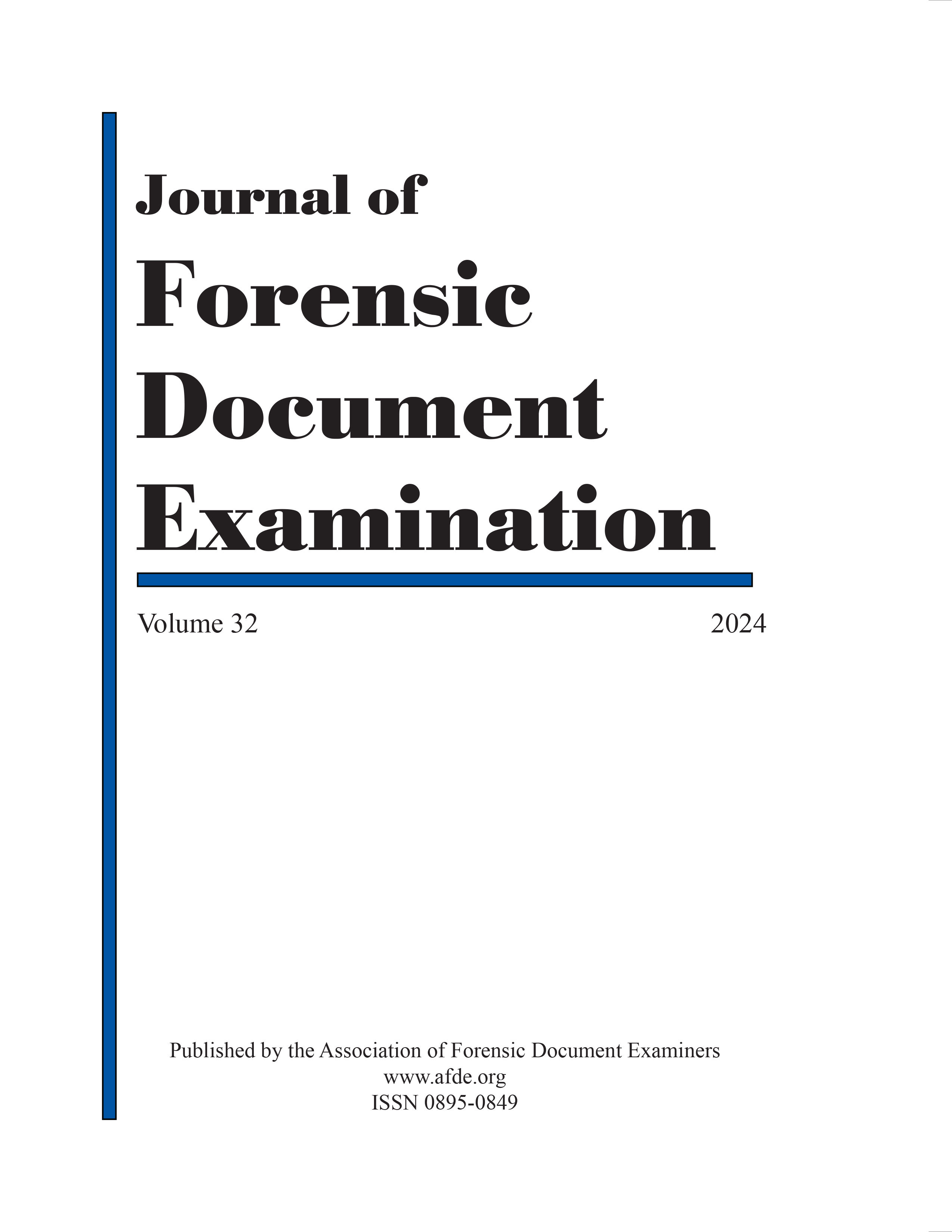Unveiling a new sophisticated ink analysis technique, and digital image processing
A Forensic Examination of Mozart’s Thematic Catalogue
DOI:
https://doi.org/10.31974/jfde32-25-36Keywords:
Mozart, Forensic Document Examination, Handwriting Analysis, Ink Analysis, Paper Watermarks, Musicology, Thematic CatalogueAbstract
This study embarks on a forensic exploration into the authenticity of Wolfgang Amadeus Mozart’s Thematic Catalogue, preserved in the British Library. It presents important research relevant for all Forensic Document Examiners, particularly because it introduces a new ink analysis technique. We reveal compelling evidence that the Thematic Catalogue, which emerged in 1799 under the stewardship of Mozart’s widow, Constanze, was not a singular creation by Mozart. Instead, it was a composite work, probably crafted posthumously. Our research employed comprehensive calligraphic analysis, comparing the Thematic Catalogue’s handwriting to Mozart’s known autographs, revealing discrepancies in style and composition. Additionally, sophisticated ink analysis highlighted chronological and stylistic inconsistencies, suggesting posthumous alterations. The software developed for this study’s graphic analysis, presented at the International Graphonomics Society Conference, offers a groundbreaking approach. It helps in deciphering the lexicon and stylistic elements in any given scribe’s handwriting. This multifaceted investigation challenges traditional interpretations of Mozart’s works. It exemplifies the application of forensic document examination techniques in historical musicology and extends their relevance to many other disciplines.
Published
How to Cite
Issue
Section
License
©2024 Journal of Forensic Document Examination (JFDE). All rights reserved. Written permission must be obtained from the editor of the JFDE at journal.jfde@gmail.com before copying, transmitting, storing, printing, or using for any other means. Authors may copy their article for educational and research purposes exclusively, retain the research data, and receive proper attribution and credit for their work.

